Recession-proof your Finances
https://www.ellisbates.com/wp-content/uploads/2022/10/Recession-proof-your-finances.jpg 560 315 Jess Easby Jess Easby https://secure.gravatar.com/avatar/0e2a278e0eef1defdd7ee9d0ae7bb398?s=96&d=mm&r=g 10 practical steps to ensure your money is working hard for you
10 practical steps to ensure your money is working hard for you
In these uncertain times, it’s more important than ever to make sure your finances are in order. The Bank of England believes that a painful squeeze on our living standards, driven primarily by soaring energy prices, is set to intensify and will push the UK economy into recession later this year.[1]
Making your finances recession-proof is all about taking practical steps to ensure your money is working hard for you. It is vital to be completely honest with yourself about your financial situation.
By conducting a thorough audit of your finances and gaining a comprehensive understanding of all your incomes and outgoings, this will show you exactly where your cash is going and, most importantly, help you identify problematic spending behaviour.
Here are 10 tops to help you recession proof your finances:
1. Make a budget and stick to it
This will help you keep track of your spending and ensure that you’re not overspending.
2. Save, save, save!
Try to put away as much money as you can into a savings account so that you have a cushion in case of tough times.
3. Invest in yourself
Take the time to learn new skills or improve upon existing ones. This will make you more valuable in the job market if you need to make a job or career change.
4. Remove any unnecessary payments
Look at your bank account and remove any pain-free direct debits. Consider if you’re currently paying for things you don’t really need, for example, subscriptions.
5. Time to switch
Look at energy tariffs, home insurance, car insurance, broadband, TV package, mobile tariff – now might be a good time to switch.
6. Stay disciplined with your debt
Make sure you’re making all of your payments on time and in full. This will help you avoid costly late fees and keep your credit in good shape.
7. Pay off high interest
Prioritise any high-interest debt, such as credit card debt, freeing up more money in your budget to cover other expenses if your income decreases.
8. Have an emergency fund
This is a must in case you lose your job or have any unexpected expenses. Try to save up at least between three to six months’ worth of living expenses so that your expenditure is covered.
9. Diversify your income
Don’t put all your eggs in one basket. Having multiple streams of income can really help. If one income source starts to dwindle – or gets eliminated completely – this will provide other sources to fall back on.
10. Diversify your investments
In addition to diversifying your income, it’s also important to diversify your investments. Review your investment portfolio and make sure your investments are spread across different industries and even different types of asset classes.
Secure your financial future
Following these tips will help you secure your financial future and protect yourself from the effects of rising inflation and the cost of living crisis. If you would like to find out more or to discuss your situation, please contact us.
Source data: [1] https://www.bankofengland.co.uk/monetarypolicy-report/2022/may-2022

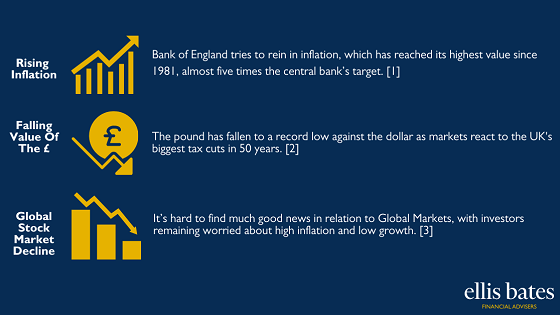
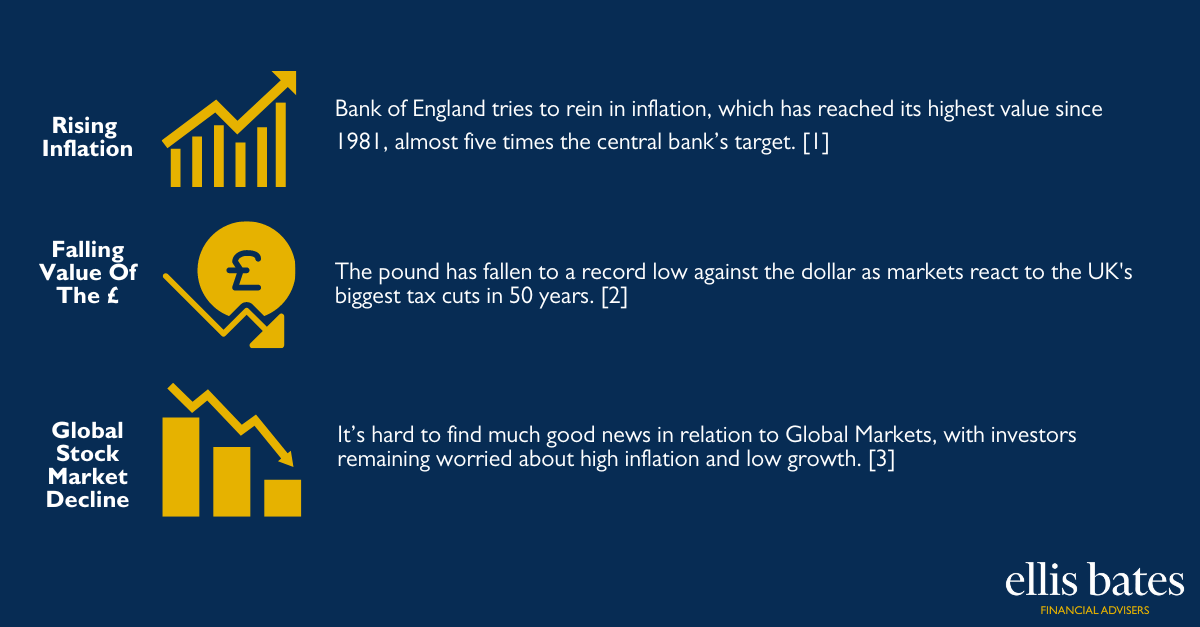

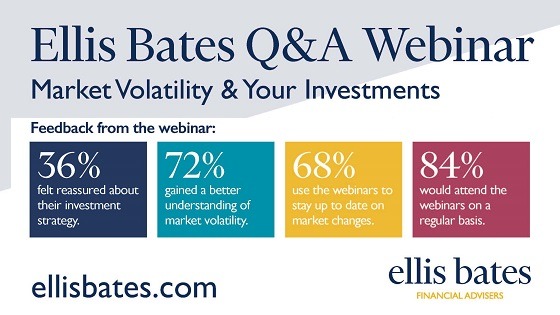
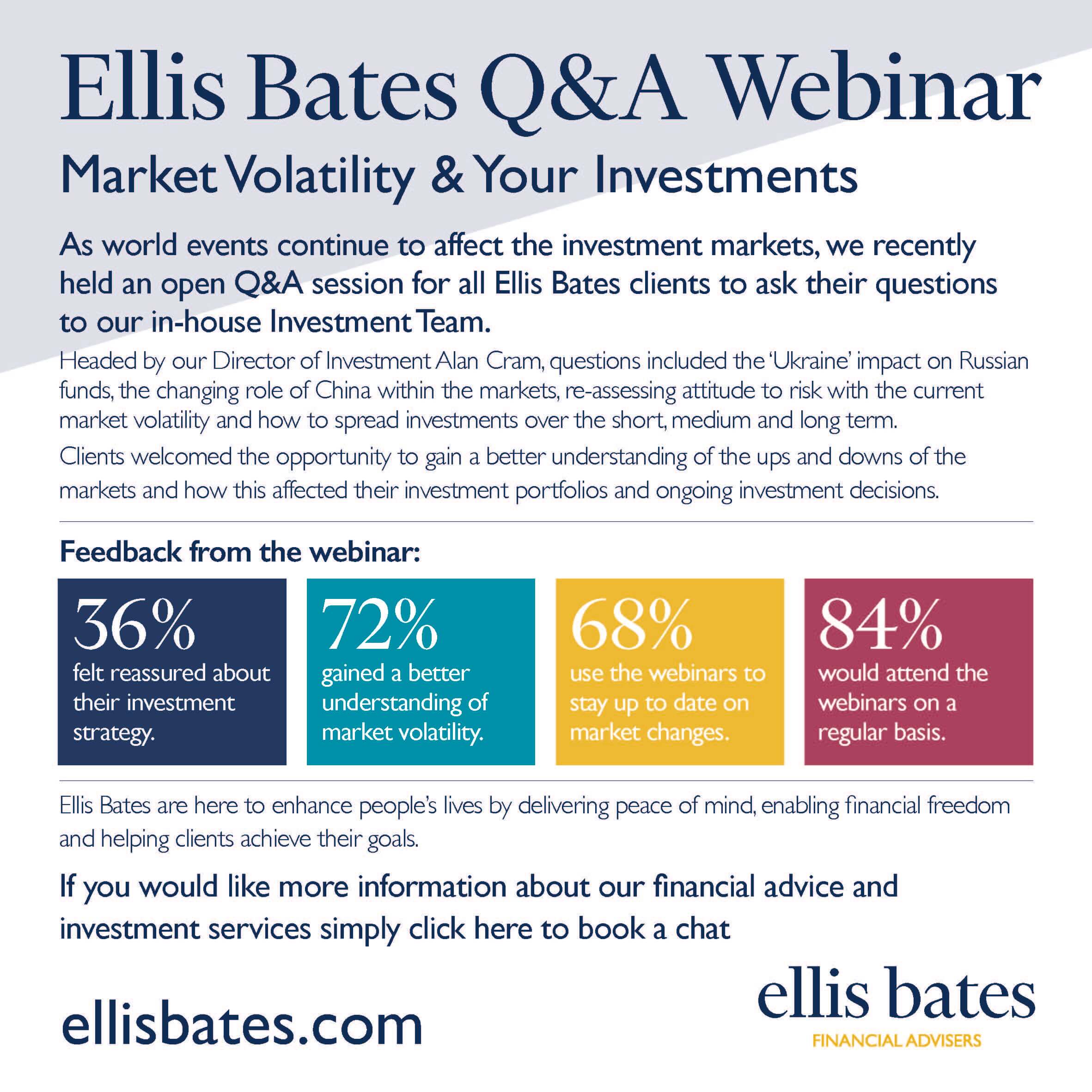

 We are now in the midst of another volatile period in investment markets and the inevitable questions are starting to come through from clients as to what is going on. Global stock markets have undergone a correction in recent weeks, while the FTSE 100, which consists of the UK’s largest companies, is moving higher and is back to pre-pandemic levels. What is causing this divergence?
We are now in the midst of another volatile period in investment markets and the inevitable questions are starting to come through from clients as to what is going on. Global stock markets have undergone a correction in recent weeks, while the FTSE 100, which consists of the UK’s largest companies, is moving higher and is back to pre-pandemic levels. What is causing this divergence?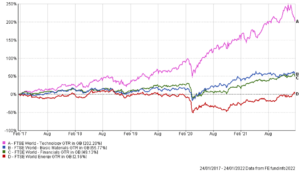

 Pension Freedoms – Looking for a wider choice of investment options?
Pension Freedoms – Looking for a wider choice of investment options?


 57% face financial difficulty in retirement years.
57% face financial difficulty in retirement years.
 Answers to the myths about your pension questions. If you are approaching retirement age, it’s important to know your pension is going to finance your plans.
Answers to the myths about your pension questions. If you are approaching retirement age, it’s important to know your pension is going to finance your plans.